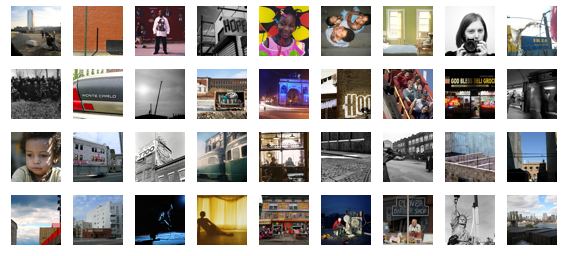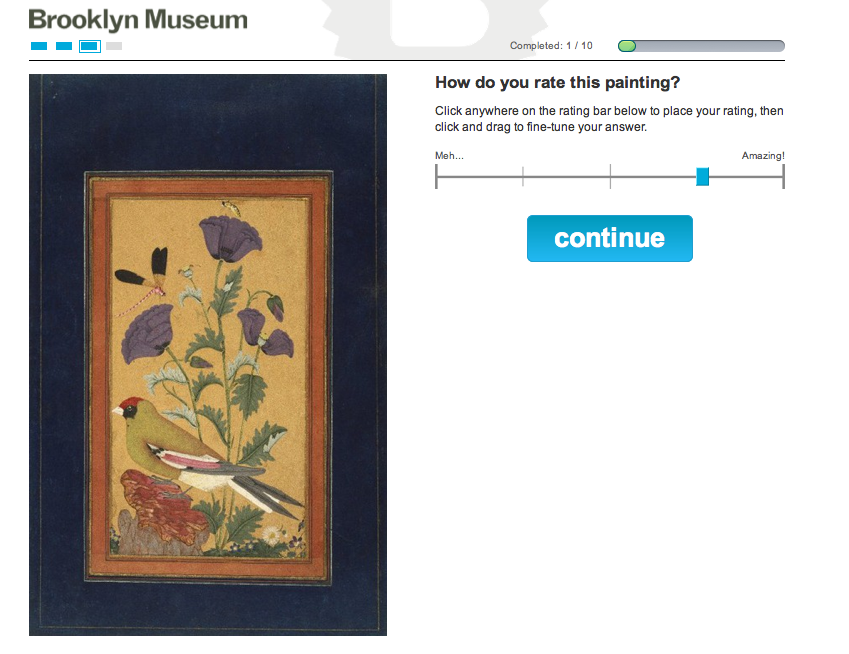The successful future of the arts and arts organizations will include artificial intelligence (AI). Artificial intelligence operates in many spheres, from generative AI, including OpenAI’s ChatGPT, DALLe or VALLe, or OtterAI’s transcription tools to robots cleaning offices to machine learning algorithms. While the opportunities seem both endless and perhaps intimidating, strategic application of these tools can make a significant difference.
Planning Our Equitable Digital Future
2020 has been and will continue to be notable for all but especially artists and arts institutions. Globally we are facing the uncomfortable realities of a pandemic that has brought the arts industries to their knees, economically, particularly the performing arts. Demands for racial and social justice come with a reckoning for many arts institutions — for their own participation in the industrial model that creates inequity in hiring, programming, training, even foundation giving.
As a researcher, artist, academic and former managing director, I hope that 2020 is a year that will offering us, as an industry, a pause to rethink how to do our artistic work in more equitable, inclusive and relevant ways. To create clarity as we re-think institutional systems , it is important to turn to data about our own institutions as well as our audiences in order to become the relevant and vibrant institutions that all communities deserve. In this short article, I will connect information from the recent national survey by LaPlaca Cohen and Slover Linett, “Culture and Community in a Time of Crisis” and emerging best business practices heralded by McKinsey and Co. and other thought leaders in the business field.
VR, Simulcast & Growing Theatre Audiences: Connecting with Remote Theater Audiences through 360-degree Simulcast
Technologically enhanced theatre experiences can extend beyond the use of cutting edge performance light and sound tech. Today’s technology allows theaters to reach audiences outside of their physical space through livestreaming performances in Virtual Reality (VR) with VR being defined as an artificial environment which is experienced through sensory stimuli (such as sights and sounds) provided by a computer and in which one's actions partially determine what happens in the environment. Furthermore, livestreaming, defined as when a person or organization “transmit[s] or receive live video and audio coverage of (an event) over the Internet” is becoming a routine part of standard social network experience. Livestreaming through VR, while still a relatively new concept, may allow the virtual audience watching the livestream to feel much more present at the performance than ever before and therefore a theater’s potential audience engagement opportunities.
What Data Tells Us About The Future of Nonprofit Arts Institutions
Upcoming Webinar – Inspiring Online Audiences: Jacob's Pillow Dance Interactive
The word "engage" gets thrown around a lot. But what does it really mean? Our upcoming webinar takes a look at how arts organizations can inspire their audiences through online platforms by focusing on a case study from Jacob's Pillow, which recently launched their own online exhibit.
Inspiring Online Audiences: Jacob's Pillow Dance Interactive May 9, 2011 2pm-3:30pm Eastern Register today ($25)
How can online engagement with arts audiences be meaningful, inspiring, and ultimately worth all the effort we put into the online space? Jacob's Pillow Dance Festival presents their recently launched online exhibit Dance Interactive, a collection of videos from 1930s dance pioneers to today's most visionary artists. Looking through the lens of crafting "inspiration", this webinar will help you define for your own organization what that catch-all term "engage" really means and the greater challenge of how to measure it.
Panelists:
 Connie Chin is General Manager of Jacob’s Pillow, an international dance festival, school, archives, community programs, and National Historic Landmark, which recently was awarded the 2010 National Medal of Arts. At the Pillow, Connie’s special projects have included Virtual Pillow, the Nonprofit Finance Fund's Leading for the Future initiative funded by the Doris Duke Charitable Foundation, and the Wallace Foundation’s Leadership and Excellence in Arts Participation initiative. She has consulted as a Peer Advisor for the Massachusetts Cultural Council, and served on grants panels in Connecticut and Westchester. Prior to the Pillow, she was in brand management at Kraft and Ocean Spray; and has also worked at the San Francisco Ethnic Dance Festival and New York Foundation for the Arts. As a dancer she has performed with Bill T. Jones, Jawole Willa Jo Zollar, Muna Tseng, Sincha Hong, Ze'eva Cohen, and others. Connie holds a B.A. from Harvard College and an M.B.A from Yale School of Management.
Connie Chin is General Manager of Jacob’s Pillow, an international dance festival, school, archives, community programs, and National Historic Landmark, which recently was awarded the 2010 National Medal of Arts. At the Pillow, Connie’s special projects have included Virtual Pillow, the Nonprofit Finance Fund's Leading for the Future initiative funded by the Doris Duke Charitable Foundation, and the Wallace Foundation’s Leadership and Excellence in Arts Participation initiative. She has consulted as a Peer Advisor for the Massachusetts Cultural Council, and served on grants panels in Connecticut and Westchester. Prior to the Pillow, she was in brand management at Kraft and Ocean Spray; and has also worked at the San Francisco Ethnic Dance Festival and New York Foundation for the Arts. As a dancer she has performed with Bill T. Jones, Jawole Willa Jo Zollar, Muna Tseng, Sincha Hong, Ze'eva Cohen, and others. Connie holds a B.A. from Harvard College and an M.B.A from Yale School of Management.
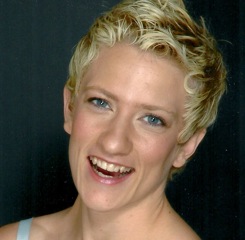 Lisa Niedermeyer is an independent consultant currently managing digital projects for Jacob's Pillow, home to America's longest running international dance festival. Lisa also serves on the advisory board of Movement Media, a NYC-based organization that empowers dance artists as curators, creators, and strategists of media. Past project highlights include working with the online marketing team at Soundwalk, an international media firm specializing in sound art and iPhone audio tours, as well as collaborating with Jane Comfort and Company (with whom she performed for 7 years) as digital content director for the company's 30th anniversary rebuild of their website.
Lisa Niedermeyer is an independent consultant currently managing digital projects for Jacob's Pillow, home to America's longest running international dance festival. Lisa also serves on the advisory board of Movement Media, a NYC-based organization that empowers dance artists as curators, creators, and strategists of media. Past project highlights include working with the online marketing team at Soundwalk, an international media firm specializing in sound art and iPhone audio tours, as well as collaborating with Jane Comfort and Company (with whom she performed for 7 years) as digital content director for the company's 30th anniversary rebuild of their website.
What's the Big Idea? 5 Key Takeaways from the Museums and the Web Conference
Museum crowd-curation and the way we live now
Should more museums follow the Brooklyn Museum’s lead?
Recently, I helped curate Split-Second: Indian Paintings, a show for the Brooklyn Museum. To do so, I simply visited their website and participated in an online activity. It took me about ten minutes, and it involved briefly looking at images, clicking on those paintings that I found most intriguing and rating other paintings on a sliding scale.
My participation in this process got me thinking not only about Indian art, but also about how my own perceptions of art in general might be shaped, and how my aesthetic tastes might compare to the sensibilities of the general public. Even more interesting to me was that this experiment in crowd-curation felt like the inevitable extension of the movement towards a more participatory culture.
What is it?
Museum crowd-curation enables the general public to become a part of the curatorial process by helping to determine, through an online platform, the artwork to be included in a physical exhibition displayed in a museum’s gallery.
The Brooklyn Museum pioneered crowd-curation three years ago with its photography exhibition Click! . First launched through an open call for artists to submit photos related to the theme of “The Changing Faces of Brooklyn”, the artwork was then made available online for anyone to curate. Perhaps most interestingly, the Brooklyn Museum staff took a transparent and scientific approach to the experiment, publicly sharing data and thoughtful analysis every step of the way. Check out Brad's Technology in the Arts podcast with Shelley Bernstein from 2008 to learn more about Click!
Now, Bernstein and the folks at the Brooklyn Museum are offering a new spin on crowd-curation by injecting theories of connoisseurship to Split-Second: Indian Paintings. Based on ideas from the book Blink by Malcolm Gladwell, Split-Second seeks to explore how our first impressions might affect our perceptions of art as well as the production of a museum exhibition. In the end, we’re left with an engaging viewer/curator experience that subtly mixes the professional with the amateur.
Why is crowd-curation so intriguing?
Increasingly, we are becoming a culture of curators, especially in the virtual world. We spend our time organizing media according to preference, grouping our memories into online photo and video databanks, and “liking” and commenting on things that other people share. What this means is that arts audiences are coming to the gallery with a newly emboldened sense of organizing and presenting content. Arts organizations therefore need to play an active role by creating opportunities for meaningful engagement.
Organizations that are at the forefront of online audience engagement are presenting ideas that go beyond simply offering information about programming. Instead, they are experimenting with different ways that audiences can become co-creators of content, which can then lead to a sense of ownership in the institution. But crowd-curation should not be simply a matter of presenting art works and having a voting contest in the sense of American Idol. Rather, arts managers need to envision a place of meaningful dialogue between their organization and their audience.
Crowd-curation is exciting because it is a clear illustration of the changing dynamics of the audience/museum relationship. It takes creative online participation and literally translates the collective online vision into physical space. Along the way, it can stimulate creative thinking by:
- Getting the participant/curator to think about her own internal perceptions of art, and perhaps inspire her to dig even deeper through self-reflection. What struck me most in my experience as a curator of Split-Second was how successful the exercise was in getting me to think about not only the art in the show but also my own understanding of visual culture.
- Creating discussion, based upon the collective decisions of the audience, about big-picture questions, like: How is artistic value determined? Is general consensus achievable in determining artist merit?
By putting the internal and collective processes together, crowd-curation has the potential to achieve multiple levels of meaningful contemplation. Of course, arts managers may feel like they are taking a significant risk. They may fear that the artistic content chosen by the masses will not constitute a “quality” exhibition in the traditional sense. And, perhaps worse, if crowd-curation IS able to produce a quality exhibition, then what is the point of having all of these professionals around? However, as sites like Wikipedia or perhaps the “comments” section of any website have shown, opening up the production of content to crowds is precisely the time when professional, articulate viewpoints are needed most.
This is not to argue that crowd-curation methods should or will replace traditional curatorial models. In fact, it doesn’t make sense for all art museums to try it (based on a number of factors such as the nature of the audience, resources available, the nature of the exhibit, etc.) Even so, crowd-curation is an innovative approach to breaking down the barriers between art museum and audience, and it’s a fascinating reflection of the way we live now.
Older Adults and Social Media, Part II: Talking with the Experts
In my last post, I asked you to think about the ways in which your organization’s social media strategies might be affected by the growing number of users over age 50. While age diversity is just one of many factors to consider when thinking about your organization’s online audience, it can be used as a point of departure in order to examine broader ideas about how to foster audience engagement through social media. To learn more, I asked three experts to answer five questions about what the rise of older adults using social media might mean for arts organizations. Below, you'll find insight from Ron Evans, Principal of Groupofminds.com Arts Marketing Consultants, Brian Reich, Managing Director of little m media and editor of thinkingaboutmedia.com, and Maryann Devine, founder of smArts & Culture and a host of tomorrow's webinar, "How to Make the Most of Your Facebook Page".
When you first began advising arts organizations in their social media strategies, how strong was the tendency to appeal to specifically younger audiences? How did that translate into the content and tone of an organization’s social media identity?
 MARYANN DEVINE: At that time, the desire to reach a younger, new audience was usually the primary reason for branching out into social media. Most groups assumed that their older, traditional audience wasn't online, much less using social media, and that belief is still prevalent today. However, most groups didn't get that social media spaces demand a different voice -- more personal, more human -- than the marketing and advertising materials they were used to producing. They were reaching for a fun, hip tone; but in most cases, like your parents trying to be cool, they weren't very convincing.
MARYANN DEVINE: At that time, the desire to reach a younger, new audience was usually the primary reason for branching out into social media. Most groups assumed that their older, traditional audience wasn't online, much less using social media, and that belief is still prevalent today. However, most groups didn't get that social media spaces demand a different voice -- more personal, more human -- than the marketing and advertising materials they were used to producing. They were reaching for a fun, hip tone; but in most cases, like your parents trying to be cool, they weren't very convincing.

RON EVANS: Reaching younger audiences has always been the initial main focus for the arts organizations I've come in contact with. I can't say that organizations were specifically writing content in a style to reach a younger audience (although that would be interesting). For the most part, the content I see today is not age-specific at all. And oftentimes the tone is still very institutional, where it should be conversational. David Dombrosky just had a great quote over at the arts marketing blog salon that I agree with: “When social media sites are used with a motivation for engagement rather than self-promotion, they often lead to those desired marketing outcomes of increased sales and brand awareness.”
 BRIAN REICH: The age of the audience has never mattered as much to me, and the people I advise. Everyone's lives are influenced by technology -- and now the Internet. Adoption was consistent across different age groups, but the usage patterns were very different, and that was where my focus has always been trained. Rather than look at younger audiences and their willingness to do certain things online, I wanted to identify what opportunities were available in terms of engaging any audience and then advise organizations on what that means to their work, online and offline.
BRIAN REICH: The age of the audience has never mattered as much to me, and the people I advise. Everyone's lives are influenced by technology -- and now the Internet. Adoption was consistent across different age groups, but the usage patterns were very different, and that was where my focus has always been trained. Rather than look at younger audiences and their willingness to do certain things online, I wanted to identify what opportunities were available in terms of engaging any audience and then advise organizations on what that means to their work, online and offline.
Do you find that organizations are beginning to understand the implications of strong social media engagement across demographics, or does it continue to be largely seen as a way to reach younger audiences?
B.R.: Yes and no. I think there is significantly more willingness to experiment and explore what is possible online, and through social media, but most organizations still lack a deep commitment to what is required to fully engage and fully leverage what is possible. Using the tools is not enough -- its how you use them that's important. Most organizations still don't share enough. More organizations still don't listen enough, or well enough. Most organizations don't engage enough. We have seen organizations integrate social media into their marketing and communications mix without changing the way they operate, organize, their staffing, etc. I would argue that we need to shift and reset the way we do everything to make the kind of advances that are possible.
R.E.: Only now am I seeing that they are realizing that there are other segments who are using Facebook. The often-quoted statistic is that the fastest-growing segment on Facebook is women over 60. That's probably true -- Facebook is where all the photos from the grandkids and such are located now. But that may be all the people are doing -- they may not be playing Facebook games, writing on the walls of arts organizations, or even updating their own status. The statistics are still being gathered about their true activity, but since that age range has traditionally been great at supporting the arts, it makes sense for arts organizations to start talking to them too.
M.D.: My experience has been that most arts organizations, whose traditional audience skews older, still assume that they're not using social media. We haven't been effective in communicating to them research findings to the contrary. The Pew Internet & American Life project found that social media use by U.S. seniors doubled last year, and 13% of people 65 and older log onto a social networking site on a typical day.
Do you find that different age groups have different needs and wants from social media?
R.E.: If you take email as the main form of communication as the base, you can look outside of that to see what people are doing. Email is still the primary way of communicating for business purposes. Some folks are just using it for that (sending an occasional email) and are mainly using Facebook for all peer-to-peer communications. Some people use Twitter for that as well, but of course, your messages tend to be much shorter.
M.D.: I think the one desire that unites people of all ages using social media is connection. Younger people are more likely to be creating and publishing original content online, and that likelihood goes down with age. Across the board, the people Forrester Research calls joiners -- those who join social networks, for example -- and spectators -- people who read blogs but don't comment, for instance -- are most prevalent.
B.R.: I think different people have different wants and needs from media generally, online and more traditional forms -- but it goes beyond age. When looking at different audience groups there are four things that help to determine, from my perspective, what people want and need. Demographics (which includes age), psychographics (what people read, watch on TV, the car they drive, etc.), technographics (their comfort with different types of technology or expectations when using a particular platform or channel) and behavioral info -- specifically what they have done in a certain context before. Yes, age does impact how people get/share information and what they expect, but there are other factors that help to create a more complete and more interesting profile of an audience that we can use to consider how an organization might communicate.
Have you found that certain social media techniques are more effective for users of different ages?
M.D.: Sure. As I said, different age groups use social media in different ways, so, for instance, it might be effective to connect to your boomer audience through Facebook or get them to join a private social network because they're likely to be joiners. But getting them to post comments, photos, or come up with a creative entry to a contest might be a stretch because on the whole, they're not big on creating and publishing original content.
R.E.: Currently, I know of no arts organization that segments to different age groups, because Facebook and Twitter do not make it easy to do this. You could set up multiple accounts of course, but that's pretty cumbersome to manage. I think this capability will be coming though...
B.R.: I don't think it’s about the technique, but rather how the target audience gets/shares information, what their expectations are in a particular situation, etc. The same techniques will work, or not work, on the same audience depending on what the conversation is about, or the time of day or location of the interaction. Its common for organizations to look to the tactics, or the tools, as the solution to a communications challenge - but that is a mistake. The tools and tactics are what facilitates the engagement - and they are flexible enough to adapt to any situation. What organizations need to really understand are their goals (and how to measure their desired outcomes/impact) and the strategy for meeting those goals -- how they need to approach the challenge. What we do know is that every audience, in every situation, is fundamentally looking for the same thing: little m media... which I define as timely, relevant, compelling INFORMATION, meaningful EXPERIENCES that they want to share, talk to people about and similar, and/or STUFF that people value and want to have as a part of their lives. If you can provide good information, experiences and stuff, the mediums and tactics can always vary and you'll still find success.
Are there any tools or methods that can help us target our various demographic bases effectively? Any tips on how we can tailor our communication to specific audience segments while still maintaining brand consistency?
B.R.: Again, you have to look beyond just demographics and really start to appreciate the psychographic, technographic and behavioral information. There are lots of studies available, lots of free data that you can look at... and if you take different pieces and parts and mash it up you will find a pretty compelling profile of your audience form which will help you to make some choices about your communications efforts. Pay attention to how people act. Consider what people want. Ask questions. Build deeper profiles of your targets, and members and supporters, and everyone else, by collecting information and determining WHY someone took a certain action or favored a particular opportunity. If you can do that the rest will turn out to be much easier.
R.E.: Perhaps I can answer this best by telling you what's missing from Facebook. Facebook needs to offer a way to segment messages based on whatever grouping of people you want. As a patron, I should be able to be a part of different "clubs" that are connected to an organization's Facebook page, so I can segment myself into a club of my choosing. That club would have it's own status updates and leaders who would help the communication to happen around a shared sub-interest, such as "Opening Night Singles Club" or the "Matinee and Coffee" club. Right now, the one-size fits all of Facebook pages doesn't allow a whole lot of flexibility. I think this will get here eventually, and I think the capabilities to manage a social media presence inside an organization will also grow to be able to accommodate this new capability.
M.D.: Forrester Research makes a number of tools free and available on their site, including the Social Technographics Profile tool. I think that, in tailoring your communications to specific audience segments, you should picture yourself personally talking to real people in each of those segments in different situations. For instance, you'd use a different tone in talking to your grandmother than you would in talking to your daughter's college roommate, but you'd still sound like yourself. It's the same with the voice you use as an organization -- you can adjust for the context of the conversation while still sounding authentically like you.
Audience 2.0, Part II: Thoughts for the Future
Check out Part I for an overview of the NEA’s recent report Audience 2.0: How Technology Influences Arts Participation While Audience 2.0 gives some useful statistics on technology and media participation in the arts, the report does not provide the answers or the data that I am looking for regarding arts participation and technology.
- How does arts participation through one technology affect participation in other technologies? For example, how does participating through television affect web participation?
- What impact has social media had on arts participation?
- How do people participate in the arts digitally and online? What are they doing on the web when they are participating?
- Has participation in the arts via technology affected online giving to arts organizations?
Audience 2.0 draws into question the timeliness of national arts research, the vehicle being used to conduct this research, and the understanding of where arts audiences are heading in the future. This report was a useful audience analysis for 2008, but the survey upon which Audience 2.0 bases its analysis lacked a sense of forward motion as well as the ability to predict future arts participation through rapidly changing technologies.
The data used in Audience 2.0 was gathered three years ago before many current technologies were available and before many new technology users had invaded the digital market. In his blog post Back To The Future, on Danceusa.org, Marc Kirshner states that:
Since the beginning of the 2007 survey period [for the 2008 report]:
- Four generations of iPhones have been released [and the Android network has been launched]
- Facebook’s user base has grown from 20 million to 400 million users
- The entire book publishing industry has been turned upside down by e-readers, such as the Kindle, Nook and iPad
- Millions of set-top boxes, Blu-ray DVD and home theater PCs have connected televisions to broadband Internet
- Hulu launched its online video service to the public
- More than 300,000 people viewed simulcasts and encores of the Metropolitan Opera’s Carmen
- The first 3-D network began broadcasting
The three year time gap between data collection and report publication created a lack of focus on many forms of new media and social networking platforms currently leading many technology discussions in the nonprofit arts industry today. Correspondingly, the relevance of the report in our current environment is brought into question, and we must remember that the report represents a snapshot in time more than a study of current habits. Due to the speed with which technology advances and its usage changes, traditional forms of data collection and publication no longer appear as useful for tracking these trends.
The survey asks about participation in the arts through technology, but Audience 2.0 does not provide answers about specific actions and their effects. The survey does not ask participants if electronic and digital media makes them more or less likely to attend a live event, but the report draws based upon a perceived correlation in the participation data. Without causality data, this correlation leaves us with a “chicken or the egg” dilemma. Does electronic/digital/online participation in the arts lead to an increase in live participation, or are participants in live arts events simply more likely to participate in electronic/digital/online arts events?
I would like to see more direct questions being asked of people who responded that they participated in the arts through electronic and digital media. Obtaining this next level of understanding will provide us with a deeper understanding of the effects of electronic and digital media on arts participation.
Audience 2.0 raises more questions than it provides answers, but it does show a commitment on the federal level to assess the impact of technology on the arts. I am hopeful that future reports will delve deeper into the seemingly symbiotic relationship between technology and arts participation by focusing more specifically on the digital/online arts participant.
Audience 2.0 - Condensed, Part I
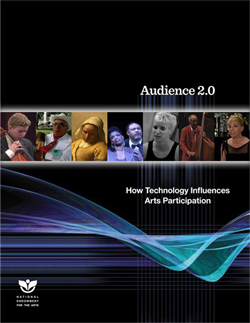 In part I of this two-part post, I summarize the findings of Audience 2.0, while tackling the problems, questions and lack of answers in part II.
Audience 2.0: How Technology Influences Arts Participation, the newest study released by the National Endowment of the Arts gives empirical quantitative data to support how technological trends affect arts participation, the health of the arts in the US, and the ways that arts patrons use electronic media to engage in the arts.
In part I of this two-part post, I summarize the findings of Audience 2.0, while tackling the problems, questions and lack of answers in part II.
Audience 2.0: How Technology Influences Arts Participation, the newest study released by the National Endowment of the Arts gives empirical quantitative data to support how technological trends affect arts participation, the health of the arts in the US, and the ways that arts patrons use electronic media to engage in the arts.
Audience 2.0 takes data from the NEA’s 2008 Survey of Public Participation in the Arts and the three other SPPA studies from 1982, 1992, & 2002 and “examines how Americans participate in the arts via electronic and digital media.” The media platforms: Radio, Audio recordings, Television, Video Recordings, Internet, & Portable Media Devices were tracked, but there is not consistant data available from every study.
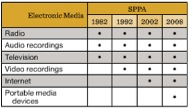
The study cited three main conclusions:
- Technology is not going to be the downfall of live performances, the arts or culture in our society,
- Technology provides a new outlet for people to experience the arts who may not otherwise have participated at all.
- Participation in the arts through electronic and digital media actually spurs participation in live arts performances and exhibitions.
The study found that “people who engage with art through media technologies attend live performances or arts exhibits at two to three times the rate of non-media arts participants.” This statistic should quell many of the concerns arts organizations have about digital media replacing them and help arts institutions embrace technology as a way to reach enrich their patrons. The study shows that technology provides a way for people to interact with arts and culture outside of the traditional venue, but it does not replace attending the physical arts or event space.
“53% of US adults used TV, radio, CDs/DVDs, computers or portable media devices to view or listen to arts performances, programs about artists, art works, museums or programs about literature.” Far more people participate in the arts as a whole than those who physically attended arts events. This shows a greater interest in arts and culture from Americans than many people had previously thought.
“For every arts performance outlet besides theater, adults were more likely to view or listen through electronic media than to attend live events.” This statistic has many people concerned about the impact of technology on the arts, however; the data shows this to be a good thing because a majority of the participants who make up the media only category represent people who would never have attended an arts event in the first place. The NEA then draws the correlation that these people would not participate in the arts at all without media and electronic technology outlets. Technology helps to widen the breadth of reach for the arts and allows people to participate in the through new portals.
Adults who used electronic media and technology only to participate in the arts had a higher likelihood of lower-than-average household incomes, residing in rural residents, belong to racial and ethnic minorities, belonging to that age group 75+, and/or having achieved no more than some college in their life. This profile directly mirrors the profile of people who do not participate in benchmark arts events at all.
The big picture of this survey is that it really just repeated many of the SPPA findings from the past three decades through the lens of technology. Overall, Education still has the greatest weight in determining arts participation, racial and ethnic minorities participate less than non-Hispanic whites, and racial and ethnic minorities tend to participate more frequently in arts event that are associated with their heritage.
This study leaves more questions than answers and those will be tackled in part II of this series.











